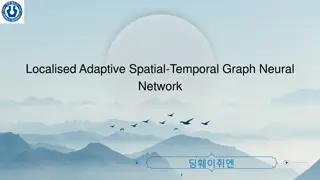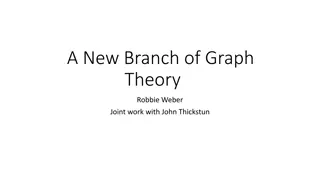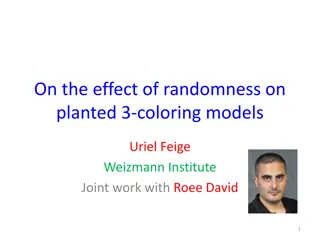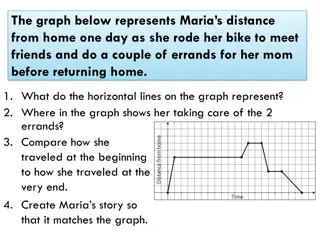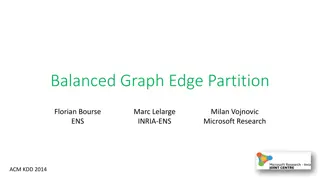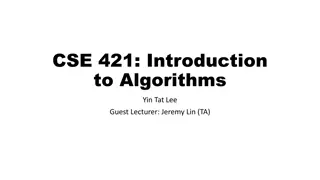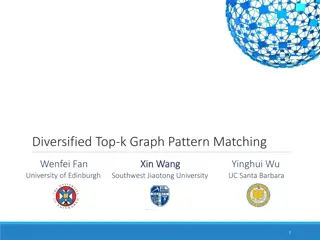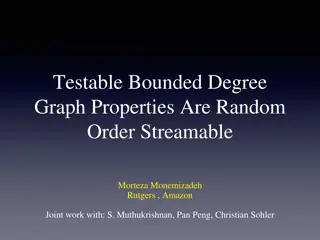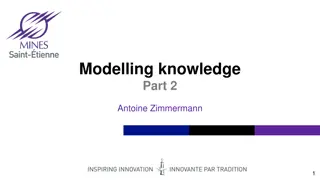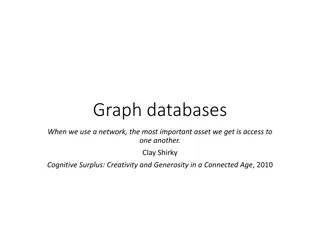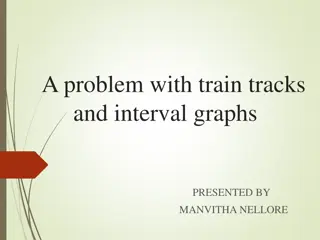Final Review and Graph Modeling Challenges
In this content, you will find a final review session for CSE 373 Data Structures and Algorithms, along with interesting challenges involving modeling scenarios such as restoring a disrupted line at Disneyland and solving a water pouring puzzle with three jars. The material also includes instructions on course evaluations for feedback and improvement. Dive into these engaging scenarios to enhance your understanding of these concepts.
Download Presentation

Please find below an Image/Link to download the presentation.
The content on the website is provided AS IS for your information and personal use only. It may not be sold, licensed, or shared on other websites without obtaining consent from the author.If you encounter any issues during the download, it is possible that the publisher has removed the file from their server.
You are allowed to download the files provided on this website for personal or commercial use, subject to the condition that they are used lawfully. All files are the property of their respective owners.
The content on the website is provided AS IS for your information and personal use only. It may not be sold, licensed, or shared on other websites without obtaining consent from the author.
E N D
Presentation Transcript
Lecture 24: Final Review CSE 373 Data Structures and Algorithms CSE 373 19SU - ROBBIE WEBER 1
Administrivia Please fill out: - Course evaluations (for both section and lecture) so the TAs and I can improve - Our custom feedback form https://docs.google.com/forms/d/e/1FAIpQLSfeTAECzu98RSgPfiAIYL8zlCcE1_mIFFp6gTJLlctMxoehFA/viewform so we can improve the course, and you can get extra credit! There s a topics list: - https://courses.cs.washington.edu/courses/cse373/19su/files/exams/topics_19su.pdf (It s a pdf linked on the exams page instead of just being on the exams page) Go to your officially registered section tomorrow for part 1! - Remember no note sheet tomorrow - But you will have the same identities sheet as the midterm. Part 2 will be here on Friday - Note sheet with same rules as midterm (one 8.5 x 11 sheet of paper) - And we ll give you the same identities sheet again. CSE 373 19SU - ROBBIE WEBER 2
5 minutes Disneyland Scenario #3 You re a Disneyland employee, working the front of the Splash Mountain line. Suddenly, the crowd-control gates fall over and the line degrades into an unordered mass of people. Sometimes you can tell who was in line before who; for other groups you aren t quite sure. You need to restore the line, while ensuring if you knew incident, they will still be in the right order afterward. knew A came before B before the What are the vertices? What are the edges? What are we looking for? What do we run? CSE 373 19SU - ROBBIE WEBER 3
Disneyland Scenario #3 You re a Disneyland employee, working the front of the Splash Mountain line. Suddenly, the crowd-control gates fall over and the line degrades into an unordered mass of people. Sometimes you can tell who was in line before who; for other groups you aren t quite sure. You need to restore the line, while ensuring if you knew incident, they will still be in the right order afterward. knew A came before B before the What are the vertices? People What are the edges? Edges are directed, have an edge from X to Y if you know X came before Y. What are we looking for? - A total ordering (i.e. a line) consistent with all the ordering we do know. What do we run? - Topological Sort! CSE 373 19SU - ROBBIE WEBER 4
7 minutes More Graph Modeling You have three jars, one holds 3 cups, another 5 cups, and the last 9 cups. You can: - Fill a jar with water (to the top) - Dump all the water from a jar (leaving none inside) - Pour the contents of one jar to another. Stopping when either the first jar runs out or the second jar becomes full. Your goal is to get exactly 7 cups of water into the jar that holds up to 9 cups, and no water in both of the other jars. Describe an algorithm to find a set of movements to do (or determine that none exists) Hint: this is a graph modeling problem!! CSE 373 19SU - ROBBIE WEBER 5
More Graph Modeling You have three jars, one holds 3 cups, another 5 cups, and the last 9 cups. What are the vertices? - Have a vertex for each possible state we could be in - e.g. jar 1 contains 2 cups of water, jar 2 contains 4 cups of water, jar 3 is empty Call this state (2,4,0) What are the edges? - Have an edge from state A to state B if a single operation will take you from A to B - For example, we have an edge from: (2,4,0) to (1,5,1) because we can pour from jar 1 into jar 2 until it s full and enter the second state. - Edges are directed (e.g. we can t get from (1,5,1) back to (2,4,0) What are we looking for? - A set of steps to get from (0,0,0) to (0,0,7) Algorithm? - Just need a path (not the shortest one). To make simpler, add a dummy target accessible from any good final state. Now run [B/D]FS from (0,0,0) and see if you can get to (0,0,7) CSE 373 19SU - ROBBIE WEBER 6
5 minutes Even More Graph Modeling You and your friends are going to get dinner on the Ave after the final. You ll leave straight from the exam, but you don t know which of the restaurants on the Ave you ll go to yet. You d like to know in advance how to get from the exam to any of the restaurants as quickly as possible. What are the vertices? What are the edges? What are we looking for? Algorithm? CSE 373 19SU - ROBBIE WEBER 7
Even More Graph Modeling You and your friends are going to get dinner on the Ave after the final. You ll leave straight from the exam, but you don t know which of the restaurants on the Ave you ll go to yet. You d like to know in advance how to get from the exam to any of the restaurants as quickly as possible. What are the vertices? - Vertex for PAA, every restaurant on the Ave, and probably a bunch of locations in-between What are the edges? - Sidewalks or any other direct connections between our vertices. - Weighted? yes! Time it takes to walk along the sidewalk - Directed? Maybe. Does it take longer to walk one direction than the other? If not undirected is fine. What are we looking for? - Shortest path from PAA to every restaurant Algorithm? - Dijkstra s, with PAA as source. Automatically find distances to all possible targets. Can reconstruct paths using predecessor pointers for any destination we need. CSE 373 19SU - ROBBIE WEBER 8
What is the in-practice running time of this code? 3 minutes Code Modeling //counts the number of vertices reachable from source. public void countElements(Graph g, Vertex source){ ChainedHashSet<Vertex> seen = new ChainedHashSet<>(); Queue<Vertex> toProcess = new Queue<>(); toProcess.enquque(source); seen.put(source); int numReachable = 1; //count v itself. while(!v.isEmpty()){ Vertex curr = toProcess.dequeue(); for(Vertex v : curr.outNeighbors()){ if( !seen.contains(v) ) seen.put(v); count++; } } return count; } CSE 373 19SU - ROBBIE WEBER 9
What is the in-practice running time of this code? Code Modeling //counts the number of vertices reachable from source. public void countElements(Graph g, Vertex source){ ChainedHashSet<Vertex> seen = new ChainedHashSet<>(); Queue<Vertex> toProcess = new Queue<>(); toProcess.enquque(source); seen.put(source); int numReachable = 1; //count v itself. while(!v.isEmpty()){ Vertex curr = toProcess.dequeue(); for(Vertex v : curr.outNeighbors()){ if( !seen.contains(v) ) seen.put(v); count++; } } return count; Happens at most ? times each call is ?(1) time. Happens at most ? times In-practice, each call is ?(1) time. Total in-practice time: ?(? + ?) } CSE 373 19SU - ROBBIE WEBER 10
What is the worst-case running time of this code? 2 minutes Code Modeling //counts the number of vertices reachable from source. public void countElements(Graph g, Vertex source){ ChainedHashSet<Vertex> seen = new ChainedHashSet<>(); Queue<Vertex> toProcess = new Queue<>(); toProcess.enquque(source); seen.put(source); int numReachable = 1; //count v itself. while(!v.isEmpty()){ Vertex curr = toProcess.dequeue(); for(Vertex v : curr.outNeighbors()){ if( !seen.contains(v) ) seen.put(v); count++; } } return count; } CSE 373 19SU - ROBBIE WEBER 11
What is the worst-case running time of this code? Code Modeling //counts the number of vertices reachable from source. public void countElements(Graph g, Vertex source){ ChainedHashSet<Vertex> seen = new ChainedHashSet<>(); Queue<Vertex> toProcess = new Queue<>(); toProcess.enquque(source); seen.put(source); int numReachable = 1; //count v itself. while(!v.isEmpty()){ Vertex curr = toProcess.dequeue(); for(Vertex v : curr.outNeighbors()){ if( !seen.contains(v) ) seen.put(v); count++; } } return count; Happens at most ? times each call is ?(1) time. Happens at most ? times Worst-case, most contains calls take (?) time (everything collides) = ?(?2+ ??) Total in-practice time: ? ? ? + ? } CSE 373 19SU - ROBBIE WEBER 12
3 minutes Sorting Design Decision You and your friends can never agree on which of the ? restaurants on the Ave to eat dinner at. You made a dataset of all the restaurants and their important properties. You want to be able to sort the dataset, under the following circumstances: 1. A friend will yell out what they care about (e.g. show me them ordered by average meal price), and you want to ensure that when someone new yells a new requirement you break ties with the previous ordering. 2. Your friends get impatient. You need to ensure no single execution of the sort takes too long. CSE 373 19SU - ROBBIE WEBER 13
Sorting Design Decision You and your friends can never agree on which of the ? restaurants on the Ave to eat dinner at. You made a dataset of all the restaurants and their important properties. You want to be able to sort the dataset, under the following circumstances: 1. A friend will yell out what they care about (e.g. show me them ordered by average meal price), and you want to ensure that when someone new yells a new requirement you break ties with the previous ordering. 2. Your friends get impatient. You need to ensure no single execution of the sort takes too long. Requirement 1 means a stable sort ?(?log?). Merge sort Merge sort meets both of those requirements (none of our other sorts do). stable sort is required. Requirement 2 means you want worst-case CSE 373 19SU - ROBBIE WEBER 14
4 minutes Design Decision You and your friends can never agree on which of the ? restaurants on the Ave to eat dinner at. Tired of all the yelling and sorting, you decide on another solution. All of you will rank the restaurants from 1 to ?, and a value ? will be chosen, then: For(each friend f) For(i = 0; i < k; i++) if only one restaurant remains, go there. else remove f s least favorite remaining restaurant as a possibility End For End For If more than one restaurant remains, pick a remaining restaurant at random. What ADT(s) would you want to use in this problem? What data structures would you use to implement them? How do you use these structures to execute this algorithm? What is the running time of the steps you have to do? (Don t try to find the overall time of the algorithm; it depends on way too many factors to cleanly analyze) CSE 373 19SU - ROBBIE WEBER 15
3 minutes Design Decision Many possibilities. Here are two: Doubly-Linked list implementation of List ADT; List contains restaurants objects that know everyone s rankings - Finding restaurant to delete involves iterating over list to find restaurant to delete (?(?)) - And deleting it ?(1) Heap implementation of priority queue; queue contains restaurant objects that know everyone s rankings - When we start processing a new person, buildHeap according to their preferences ?(?) - To remove least favorite restaurant just remove min ?(log?) CSE 373 19SU - ROBBIE WEBER 16
2 minutes Design Decision Here s another! Have a set of remaining restaurants and a list for each person s preferences. Use a hash set for the restaurants. To choose: - Iterate from the end of each person s preference, if the set still has the restaurant, remove it. Else move up one in the list until you ve deleted ?. - Worst case lookup in the lists? ?(1) (either use an arraylist, or implement a custom reverse order iterator) - In-practice time for each lookup and delete? ?(1) - Worst case time for each lookup and delete? ?(?) CSE 373 19SU - ROBBIE WEBER 17
P/NP We ll only ask multiple choice questions on P vs. NP. P (stands for Polynomial ) The set of all decision problems that have an algorithm that runs in time ? ?? for some constant ?. NP (stands for nondeterministic polynomial ) The set of all decision problems such that if the answer is YES, there is a proof of that which can be verified in polynomial time. NP-complete Problem B is NP-complete if B is in NP and for all problems A in NP, A reduces to B in polynomial time. CSE 373 19SU - ROBBIE WEBER 18
3 minutes Sample questions: Which of the following problems is NP-complete? a) 3-SAT b) Minimum Spanning Tree c) 2-Coloring Which of the following would solve the P vs. NP? a) Finding a polynomial time algorithm for 3-SAT b) Showing there is no polynomial time algorithm for 2-SAT c) Reducing 2-SAT to 3-SAT Which of the following is not a thing to try when you think the problem you want to solve might be NP-complete? a) See if your problem is a special case that does have an efficient algorithm. b) Try an approximation algorithm. c) Implement a polynomial time algorithm for 3-SAT CSE 373 19SU - ROBBIE WEBER 19
Sample questions: Which of the following problems is NP-complete? a) 3-SAT b) Minimum Spanning Tree c) 2-Coloring Which of the following would solve the P vs. NP? a) Finding a polynomial time algorithm for 3-SAT b) Showing there is no polynomial time algorithm for 2-SAT c) Reducing 2-SAT to 3-SAT Which of the following is not a thing to try when you think the problem you want to solve might be NP-complete? a) See if your problem is a special case that does have an efficient algorithm. b) Try an approximation algorithm. c) Implement a polynomial time algorithm for 3-SAT CSE 373 19SU - ROBBIE WEBER 20
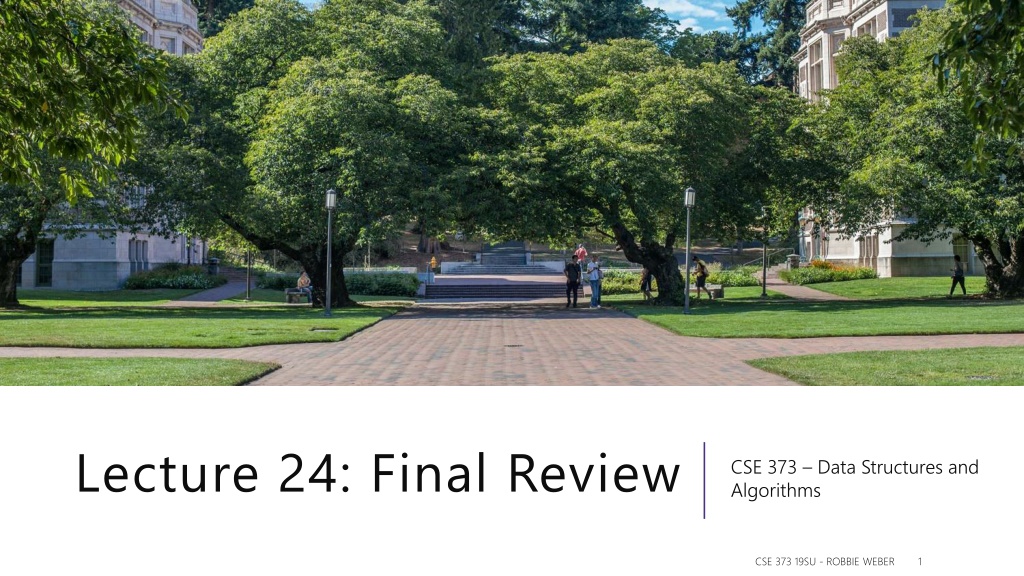
 undefined
undefined




